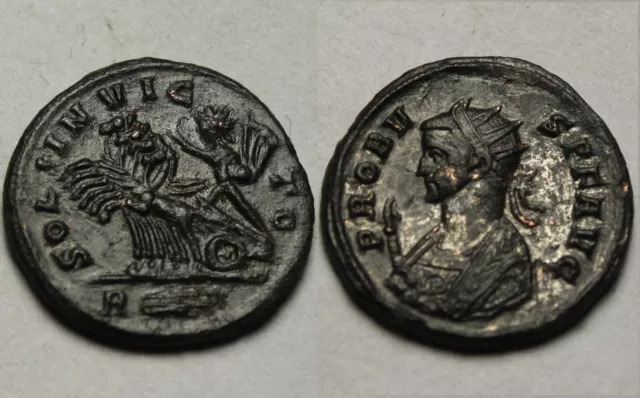Rare genuine Ancient Roman coin Silvering Antoninianus Probus SOL in quadriga
Marcus Aurelius Probus, 276-282 AD
AE antoninianus 20-21mm. 4.01gm. Rome mint. (VF) Original glossy patina over rich ancient silvering.
Slightly cleaned. Better in hand.
OBV./ IMP PROBVS PF AVG, radiate mantled bust left holding eagle-tipped sceptre.
Rev. / SOLI INVICTO, Sol in quadriga leaping left. Mintmark R-thunderbolt-Γ.
Cohen 648.
Coin is in good condition and very rare and nice inclusion to the finest collection.Authenticity guaranteed. COA included!!!
Sol is the personification of the Sun and a god in ancient Roman religion. It was long thought that Rome actually had two different, consecutive sun gods: The first, Sol Indiges (Latin: the deified sun), was thought to have been unimportant, disappearing altogether at an early period. Only in the late Roman Empire, scholars argued, did the solar cult re-appear with the arrival in Rome of the Syrian Sol Invictus (Latin: the unconquered sun), perhaps under the influence of the Mithraic mysteries. Publications from the mid-1990s have challenged the notion of two different sun gods in Rome, pointing to the abundant evidence for the continuity of the cult of Sol, and the lack of any clear differentiation – either in name or depiction – between the "early" and "late" Roman sun god. Etymology The Latin sol for "Sun" is believed to originate in the Proto-Indo-European language, as a continuation of the heteroclitic *Seh2ul- / *Sh2-en-, and thus cognate to other solar deities in other Indo-European languages: Germanic Sol, Sanskrit Surya, Avestan Hvare-khshaeta, Greek Helios, Lithuanian Saulė. Also compare Latin sol to Etruscan usil. Today, Romance languages still use reflexes of sol (e.g., Italian sole, Portuguese sol, Spanish sol, Romanian soare and French soleil) as the main word for "sun". In the Roman Republic According to Roman sources, the worship of Sol was introduced by Titus Tatius shortly after the foundation of Rome.[7][8] In Virgil he is the grandfather of Latinus, the son of Sol's daughter Circe who lived not far from Rome at Monte Circeo.[9] A shrine to Sol stood on the banks of the Numicius, near many important shrines of early Latin religion. In Rome Sol had an "old" temple in the Circus Maximus according to Tacitus (56–117 CE), and this temple remained important in the first three centuries CE. There was also an old shrine for Sol on the Quirinal, where an annual sacrifice was offered to Sol Indiges on August 9 to commemorate Caesar's victory at Pharsala (48 BCE).[b] The Roman ritual calendars or fasti also mention a feast for Sol Indiges on December 11, and a sacrifice for Sol and Luna on August 28. Traditionally, scholars have considered Sol Indiges[c] to represent an earlier, more agrarian form in which the Roman god Sol was worshipped, and considered him to be very different from the late Roman Sol Invictus, who they believed was a predominantly Syrian deity. Neither the epithet "indiges" (which fell out of use sometime after Caesar) nor the epithet "invictus" are used with any consistency however, making it impossible to differentiate between the two. Sol Invictus Polychrome reproduction of the Mithraic banquet scene featuring Mithras and the Sun god (Sol Invictus) banqueting on the hide of the slaughtered bull, dating to 130 CE, Lobdengau-Museum, Ladenburg, Germany Main article: Sol Invictus Sol Invictus (English translated as "Unconquered Sun") was long thought to have been a foreign state-supported sun god introduced from either Emesa or Palmyra in Syria by the emperor Aurelian in 274 and overshadowing other Eastern cults in importance, until the abolition of classical Roman religion under Theodosius I. However the evidence for this is meager at best, and the notion that Aurelian introduced a new cult of the sun ignores the abundant evidence on coins, in images, in inscriptions, and in other sources for a strong presence of the sun god in Rome throughout the imperial period. Tertullian (died 220 CE) writes that the Circus Maximus was dedicated primarily to Sol. During the reign of Aurelian, a new college of pontiffs for Sol was established.[20] There is some debate over the significance of the date December 21 for the cult of Sol. According to a single, late source, the Romans held a festival on December 21 of Dies Natalis Invicti, "the birthday of the unconquered one." Most scholars assume Sol Invictus was meant, although our source for this festival does not state so explicitly. December 25 was commonly indicated as the date of the winter solstice,[e] with the first detectable lengthening of daylight hours. The Philocalian calendar of AD 354, part VI, gives a festival of NATALIS INVICTI on 25 December. There is limited evidence that this festival was celebrated before the mid-4th century. The same Philocalian calendar, part VIII, also mentions the birth of Jesus Christ, stating that the "Lord Jesus Christ was born eight days before the calends of January" (that is, on December 25). Since the 12th century,[26] there have been speculations that the near-solstice date of 25 December for Christmas was selected because it was the date of the festival of DIES NATALIS SOLIS INVICTI, but historians of late antiquity make no mention of this, and others speculate Aurelian chose December 25 to shadow early Christian celebrations already on the rise. When the festival on December 25 was instituted is not clear, which makes it hard to assess what impact (if any) it had on the establishment of Christmas. There were also festivals on other days in December, including the 11th (mentioned above), as well as August. Gordon points out that none of these other festivals are linked to astronomical events. Throughout the 4th century the cult of Sol continued to be maintained by high-ranking pontiffs, including the renowned Vettius Agorius Praetextatus. Connection to emperors On the left, the Roman Emperor Aurelian with a radiate crown and on the right, a depiction Sol According to the Historia Augusta, Elagabalus, the teenaged Severan heir, adopted the name of his deity and brought his cult image from Emesa to Rome. Once installed as emperor, he neglected Rome's traditional State deities and promoted his own as Rome's most powerful deity. This ended with his murder in 222. The Historia Augusta equates the deity Elagabalus with Jupiter and Sol: fuit autem Heliogabali vel Iovis vel Solis sacerdos, "He was also a priest of Heliogabalus, or Jove, or Sol". While this has been seen as an attempt to import the Syrian sun god to Rome, the Roman cult of Sol had existed in Rome at least since the early Republic. As the Cult of Sol grew and Sol took on attributes of other deities, Sol began to be used as a way to display imperial power. The radiate crown shown on some emperor's portraits on coins minted in the 3rd century was associated with Sol, and may have been influenced by earlier depictions of Alexander the Great. Some coins minted in the 4th century depict Sol on one side. Constantine I wore the "radiate crown" though some argue that it was intended to represent the "Holy Nails" and not Sol. Identification with other deities Sol was most notably identified with Phoebus Apollo; such equation famously occurs in Varro and Ovid. The Greek assimilation of Apollo and Helios was already established in Rome by the end of the republic. Various Roman philosophers speculated on the nature of the sun, without arriving at any consensus. A typical example is Nigidius, a scholar of the 1st century BCE. His works have not survived, but writing five centuries later, Macrobius reports that Nigidius argued that Sol was to be identified with Janus and that he had a counterpart, Jana, who was Luna. As such, they were to be regarded as the highest of the gods, receiving their sacrifices before all the others. Such speculations appear to have been restricted to an erudite elite and had no impact on the well-attested cult of Sol as independent deity: No ancient source aside from Macrobius mentions the equation of Sol with Janus. Connection to Mithras Sol appears many times in depictions of Mithras, such as the Tauroctony of Mithras killing the bull, and looking at Sol over his shoulder. They appear in other scenes together from Mithras ascending behind Sol's chariot, shaking hands and some depictions of Sol kneeling to Mithras. Mithras was known as Sol Invictus even though Sol is a separate deity, a paradoxical relationship where they are each other but separate. They are separate deities but due to some similarities a connection between them can be created which can lead to one over taking the other.
|
Probus (/ˈproʊbəs/; Latin: Marcus Aurelius Probus Augustus; c. 19 August 232 – September/October 282), was Roman Emperor from 276 to 282. Probus was an active and successful general as well as a conscientious administrator, and in his reign of six years he secured prosperity for the inner provinces while withstanding repeated inundations of hostile barbarian tribes on almost every sector of the frontier.
After repelling the foreign enemies of the empire Probus was forced to handle several internal revolts, but demonstrated leniency and moderation to the vanquished wherever possible. In his reign the facade of the constitutional authority of the Roman Senate was fastidiously maintained, and the conqueror who had carried his arms to victory over the Rhine professed himself dependent on the sanction of the Senate.
Upon defeating the Germans Probus re-erected the ancient fortifications of emperor Hadrian between the Rhine and Danube rivers, protecting the Agri Decumates, and exacted from the vanquished a tribute of manpower to resettle depopulated provinces within the empire and provide for adequate defense of the frontiers.[8] Despite his widespread popularity, Probus was killed in a mutiny of the soldiers while in the middle of preparations for the Persian war, which would be carried out under his successor Carus. Probus was born between 230 and 235 (exact date of birth unknown) in Sirmium (modern day Sremska Mitrovica), Pannonia Inferior, the son of Dalmatius According to the Alexandrian Chronicle, he was born sometime in the year 232. Military career
Probus entered the army around 250 upon reaching adulthood. He rose rapidly through the ranks, repeatedly earning high military decorations. Appointed as a military tribune by the emperor Valerian, at a very young age, in recognition of his latent ability,[citation needed] he justified the choice by a distinguished victory over the Sarmatians on the Illyrian frontier. During the chaotic years of the reign of Valerian, Illyria was the only province, generaled by such officers as Claudius, Aurelian and Probus, where the barbarians were kept at bay, while Gaul was overrun by the Franks, Rhaetia by the Alemans, Thrace and the Mediterranean by the Goths, and the east by Shapur I. Probus became amongst the highest placed lieutenants of Aurelian, reconquering Egypt from Zenobia in 273 A.D. Emperor Tacitus, upon his accession in 275, appointed Probus supreme chief of the east, granting him extraordinary powers in order to secure a dangerous frontier. Though the details are not specified, he is said to have fought with success on almost every frontier of the empire, before his election as emperor by the troops upon Tacitus' death of old age in 276, in his camp in Asia Minor. Florianus, the half-brother of Tacitus, also proclaimed himself emperor, and took control of Tacitus' army in Asia Minor, but was killed by his own soldiers after an indecisive campaign against Probus in the mountains of Cilicia. In contrast to Florianus, who ignored the wishes of the senate, Probus referred his claim to Rome in a respectful dispatch. The senate enthusiastically ratified his pretensions. Probus next travelled west, defeating the Goths along the lower Danube in 277, and acquiring the title of Gothicus. However, the Goths came to respect his ability and implored a treaty with the empire. In 278, Probus campaigned successfully in Gaul against the Alamanni and Longiones; both tribes had advanced through the Neckar valley and across the Rhine into Roman territory. Meanwhile, his generals defeated the Franks and these operations were directed to clearing Gaul of Germanic invaders (Franks and Burgundians), allowing Probus to adopt the titles of Gothicus Maximus and Germanicus Maximus. Reportedly, 400,000 barbarians were killed during Probus' campaign, and the entire nation of the Lugii were extirpated.
After the defeat of the Germanic invaders in Gaul, Probus crossed the Rhine to campaign successfully against the Barbarians in their homeland, forcing them to pay homage. In the aftermath of the campaign, Probus repaired the ancient fortifications erected by Hadrian in the vulnerable space between the Rhine and Danube, in the territory of Swabia. More significantly, Probus, by forcing from the vanquished tribes a tribute of manpower, established the precedent of settling barbarians within the empire as auxiliaries on a large scale. The provinces were depopulated by war, disease and the chaotic administration, heavy taxation, and extensive army recruitment, during the crisis of the Third century, and the barbarian colonies, at least in the short term, helped to restore frontier defense and the practice of agriculture.
The army discipline which Aurelian had repaired was cultivated and extended under Probus, who was however more shy in the practice of cruelty. One of his principles was never to allow the soldiers to be idle, and to employ them in time of peace on useful works, such as the planting of vineyards in Gaul, Pannonia and other districts, in order to restart the economy in these devastated lands.
In 279–280, Probus was, according to Zosimus, in Raetia, Illyricum and Lycia, where he fought the Vandals. In the same years, Probus' generals defeated the Blemmyes in Egypt. Either then, or during his previous command in Egypt, he ordered the reconstruction of bridges and canals along the Nile, where the production of grain for the Empire was centered.
In 280–281, Probus put down three usurpers, Julius Saturninus, Proculus and Bonosus. The extent of these revolts is not clear, but there are clues that they were not just local problems (an inscription with the name of Probus erased has been found as far as Spain). In 281, the emperor was in Rome, where he celebrated his well-deserved triumph. Probus was eager to start his eastern campaign, delayed by the revolts in the west. He left Rome in 282, travelling first towards Sirmium, his birth city. Assassination
Different accounts of Probus's death exist. According to Joannes Zonaras, the commander of the Praetorian Guard Marcus Aurelius Carus had been proclaimed, more or less unwillingly, emperor by his troops.
Probus sent some troops against the new usurper, but when those troops changed sides and supported Carus, Probus' remaining soldiers assassinated him at Sirmium (September/October 282). According to other sources, however, Probus was killed by disgruntled soldiers, who rebelled against his orders to be employed for civic purposes, like draining marshes. Allegedly, the soldiers were provoked when they overheard him lamenting the necessity of a standing army. Carus was proclaimed emperor after Probus' death and avenged the murder of his predecessor. Legacy
According to the favorable treatment of Gibbon (whose account is largely derived from the Augustan History), Probus was the last of the benevolent constitutional emperors of Rome. While his successor Carus (Imp. 281-284) simply disdained to seek the senate's confirmation of his title, the latter's successor Diocletian (Imp. 284-305) took active measures to undermine its authority, and established the autocratic nature and divine derivation of the Imperial power. Never again, after Diocletian's reforms, would the Roman senate play an active role in the management of the empire. On the military sphere, Probus' victories continued the succession of martial Illyrian emperors begun by Claudius Gothicus, which restored the military supremacy of Rome after defeats sustained during the crisis of the third century. | ||
| |
- Condition: Coin is in good condition and very rare and nice inclusion to the finest collection. Authenticity guaranteed!! COA included!!
- Denomination: Antoninianus
- Historical Period: Roman: Imperial (27 BC-476 AD)
- Composition: Bronze
- Year: 276 AD
- Era: Ancient
- Ruler: Probus
- Date: 282AD
PicClick Insights - Rare genuine Ancient Roman coin Silvering Antoninianus Probus SOL in quadriga PicClick Exclusive
- Popularity - 1 watcher, 0.0 new watchers per day, 95 days for sale on eBay. Normal amount watching. 0 sold, 1 available.
- Best Price -
- Seller - 19,898+ items sold. 1.3% negative feedback. Top-Rated Plus! Top-Rated Seller, 30-day return policy, ships in 1 business day with tracking.
People Also Loved PicClick Exclusive
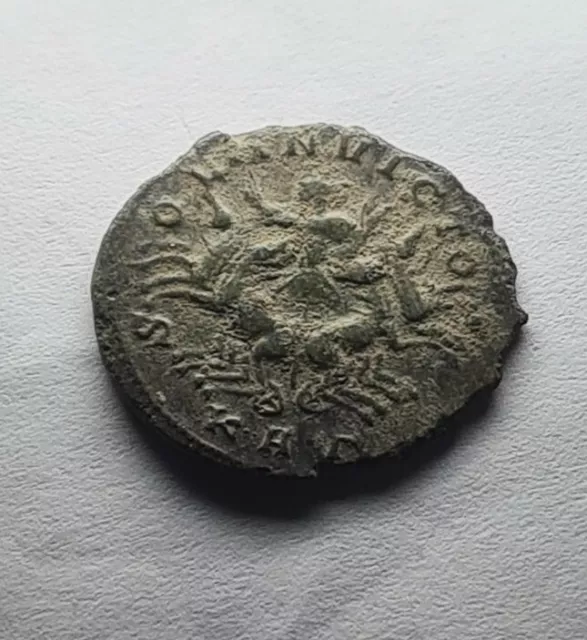
Rare Probus * Genuine Ancient Roman Bronze Antoninianus Coin - Quadriga Serdica
$99.00 Buy It Now 19d 20h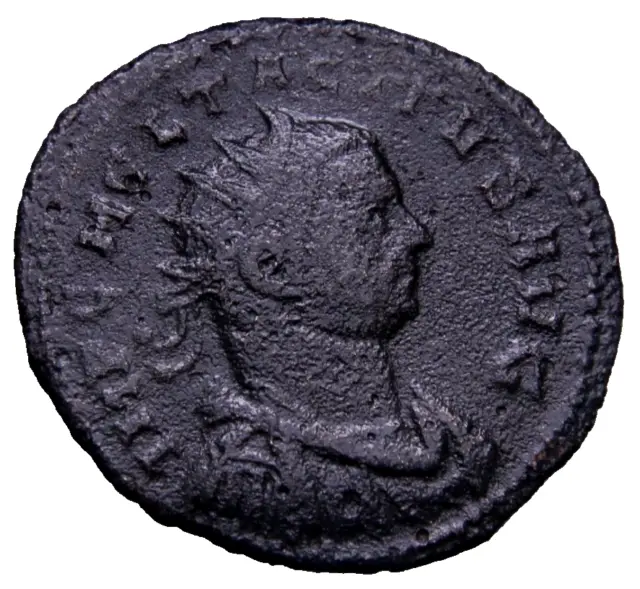
Genuine Ancient Roman Coin TACITUS (275-276). Antoninianus. Serdica. KA SCarce
$37.35 Buy It Now 23d 17h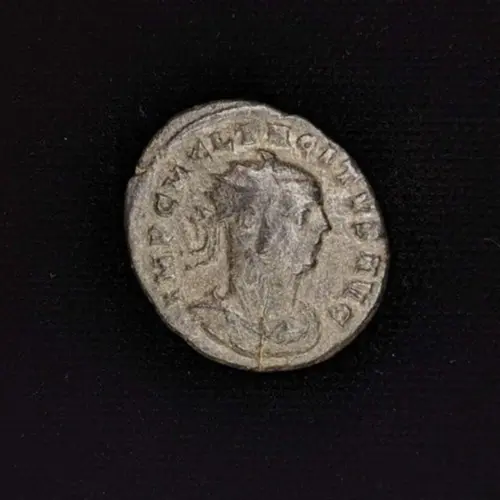
Roman Silver Coin -- Tacitus Antoninianus
$52.00 Buy It Now 3d 11h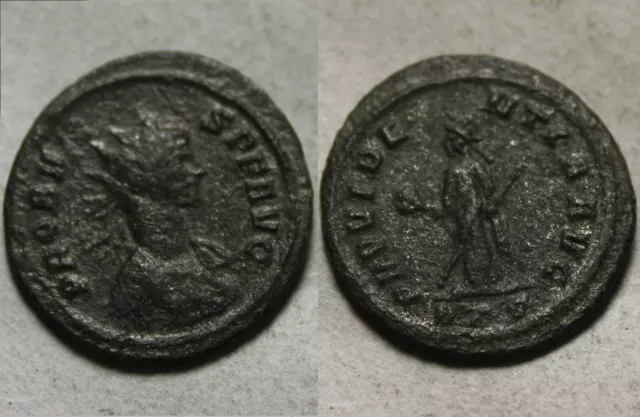
RARE genuine ancient Roman coin Probus 282 Antoninianus Providence RTS silvering
$49.00 Buy It Now 21d 17h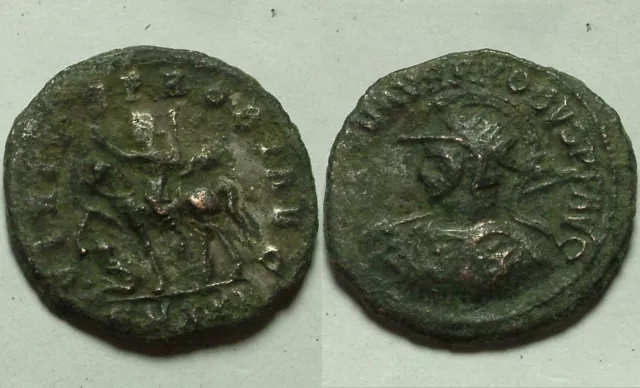
RARE Original ancient Roman coin Probus horserider shield captive Antoninianus
$78.40 Buy It Now 21d 14h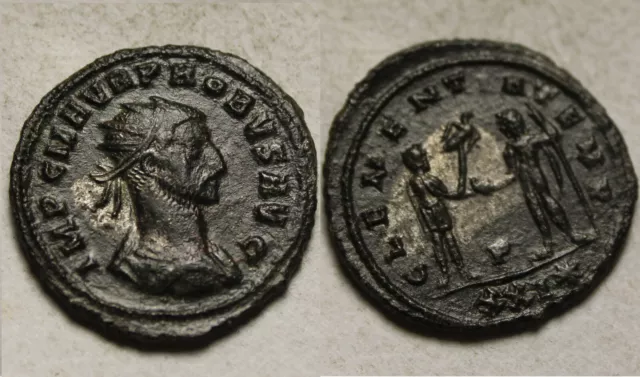
 Rare genuine Ancient Roman coin Antoninianus Probus, Cyzicus, Jupiter, silvering
Rare genuine Ancient Roman coin Antoninianus Probus, Cyzicus, Jupiter, silvering$103.17$82.54 Buy It Now or Best Offer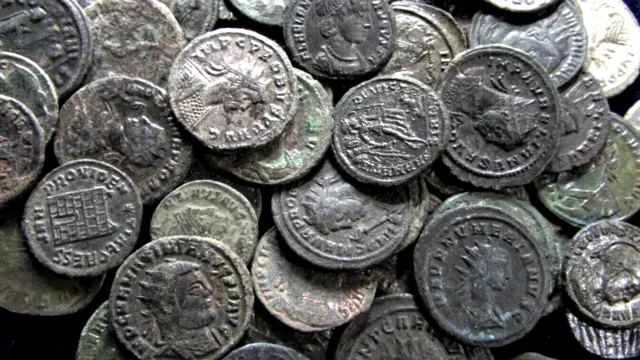 13 watchers
13 watchersRare Genuine ancient Roman Coin Constantine, Probus,Aurelianus,Tacitus,Numerian
$12.37 Buy It Now or Best Offer 1 watcher
1 watcher DESERT PATINA Genuine Ancient Roman Coin AU/MU Antoninianus Probus TRIPOLIS
DESERT PATINA Genuine Ancient Roman Coin AU/MU Antoninianus Probus TRIPOLIS$152.70$126.74 Buy It Now or Best Offer
